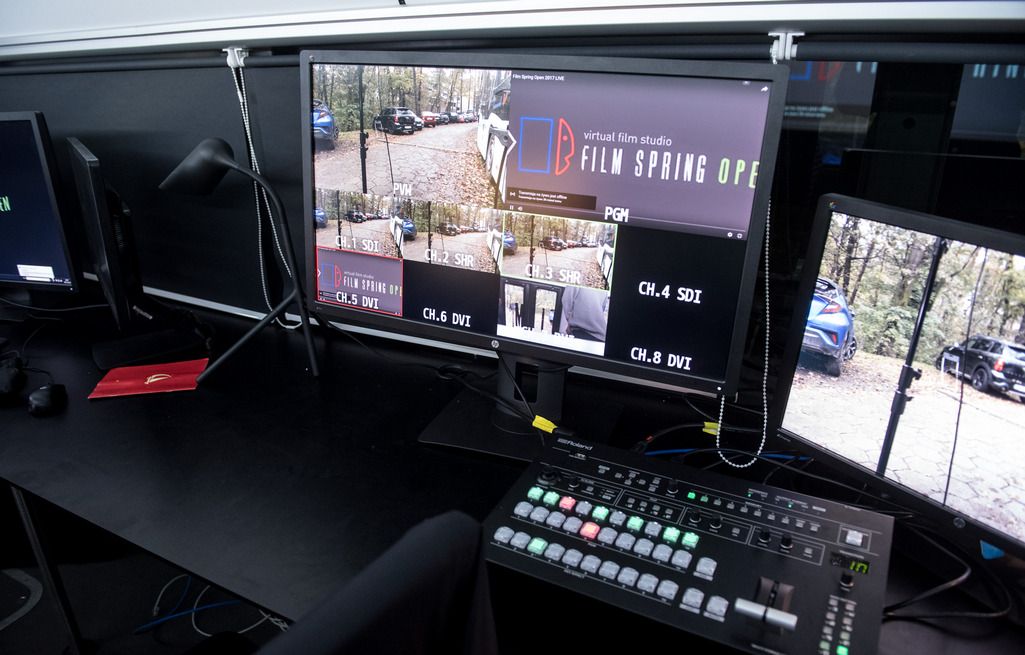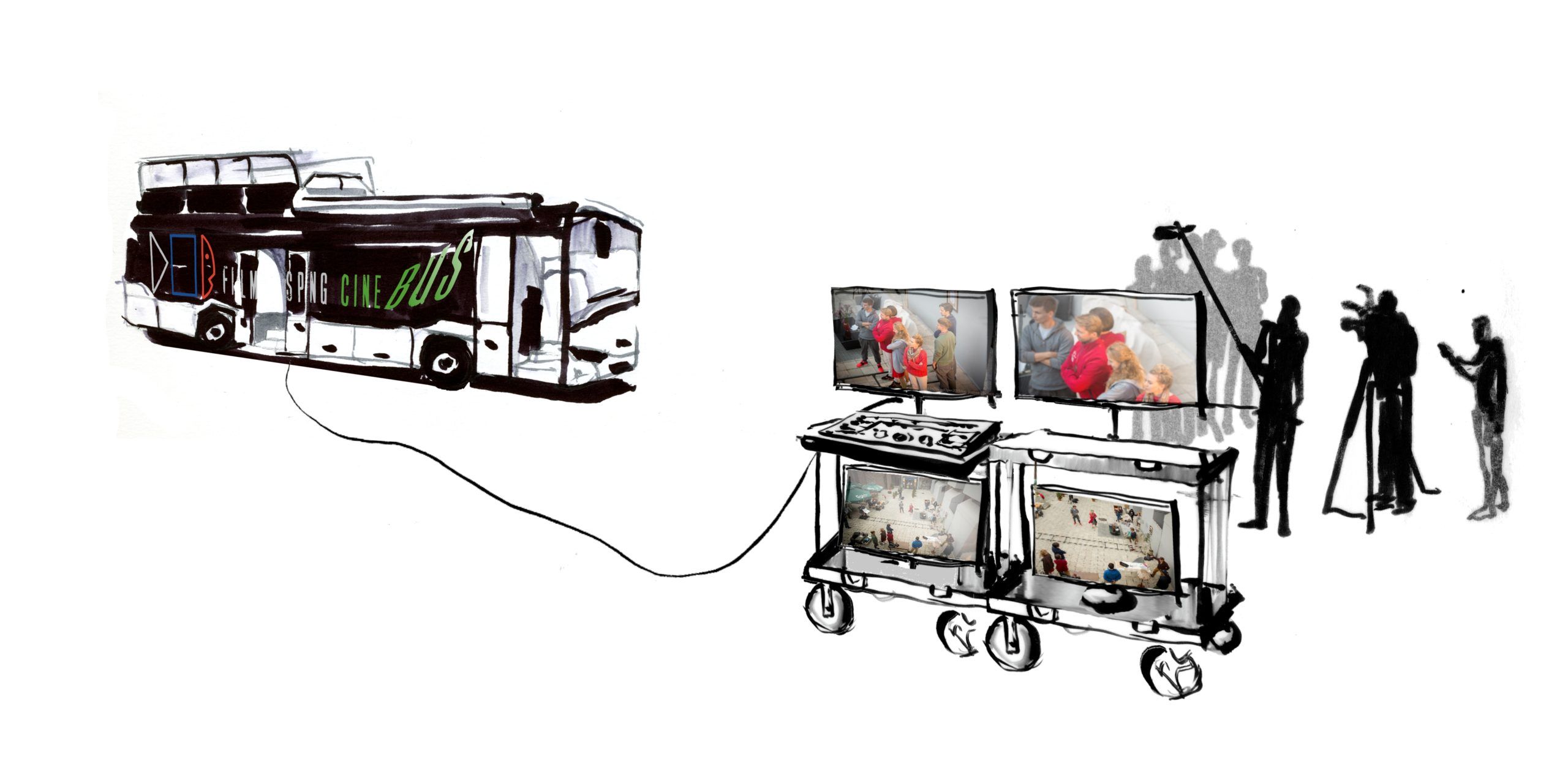
As it is
The profession, which used to be called “Second Director” in Poland, was awarded the number 1. First Director Assistant is a professional position which in the American system has little in common with directing. Their responsibility is in production and the person for the job is usually chosen by the film producer. Their role can be described, with little exaggeration, as the role of overseer, whose task is to whip up and enforce the speed of work on the plan. In the studio system, the First Director Assistant receives a bonus for making films on time. Their position on the set is indisputable. In fact, it is the First Assistant Director who decides what happens on the set. They are a specialist in the thicket of U. S. trade union and professional laws and are the one burdened with building the set. As we can guess, this plan often has nothing to do with the drama of the work that is being created. Often, background scenes have more time allocated than those crucial for the storyline. No wonder that this role and such “clandestine” positioning of the First Assistant Director on the set, as officially the Director’s representative, was eagerly taken over by European producers and the current production system.
As it could be
In a small film (but not only) the “First Assistant Director”, or using old terminology, the Second Director is the person who unambiguously represents the interest of the film, i.e. of the Director.
They should be elected and trusted by the Director. They should be present and active during the preparation of the film for the shooting.
The responsibilities of the Second Director in the new system:

They used to be the person registering the behavior (the gestures of actors) so that when implementing the reverse shots, the actors could repeat them exactly in the same place. Currently, this role is fulfilled by image recording. The recorded material can be viewed at any time and the actor can precisely repeat their behaviour. In addition, the film is often shot in a multi-camera system, where the necessity of repeating the same behaviours is unnecessary. The set secretary now describes what has been done on the set in special reports. However, the number of fields and descriptions to be filled in by the Plan secretary is superfluous. Nobody or almost nobody reads it. It was supposed to serve the editing team in understanding what has been done on the set, but once the editing is established on the set, it becomes redundant. The part of the description that is made by the set secretary could be used by VFX, but there are no such items in existing forms. The VFX Supervisor prefers to make the right measurements themselves, because the accuracy of such measurements shortens the working time in developing the effects.
We often film using cameras without operator (Crash cameras) these cameras are switched on much earlier and record minutes of bland material to catch something that is valuable and only takes 0.5 seconds, e. g. an explosion. The set secretary does not have the tools to select these moments. Their archiving documentation does not provide for such description, and there are no tools to make it. Nowadays, the work of the set secretary shows clearly how technological changes should force the evolution of a profession, and how we are stuck eye-deep in the old system.

As it is
I have already written about the reasons why people who are often talented are defeated in this profession. So I will limit myself to saying that the European model of a film director is the military model. The director is a general on set, and is always right. If they announce to their team that, in their opinion, black is not black and that, in their opinion,”black is actually white”, their team will conceal their true opinion and will concur. This model of the infallible director is fundamentally different from the film studio model, where the control of both the producer and the studio financing the film is much greater. The director is a professional rented by the studio/producer and their typical contract provides the option of releasing them from duty at any time. It is quite common for the directors to be stripped of the right to the so-called “final cut” – the final version of the film after editing. The leap from the film school and films made in the student model to the professional model is often a cause of trauma and shock. The confrontation with the professional reality of film production, so distant from the atmosphere and technique of student short forms, and most of all the lack of tools for controlling the emerging film are often the cause of personal failure of the young adepts and at the same time the failure of the project.
As it could be
The model proposed by us give the director a tool (previs) for controlling his vision of the film that would otherwise be usually inaccessible for others. The way in which the director wants to transfer the text of the script to the screen is usually “emdedded in their head” and others have no chance to see it.
Previs is a method to uncover these mechanisms and make them public. We want to build a system – not a military one, but a team-based one. The whole team after the preparation of the previs and its screening will be aware of what is expected from them. They will be more conscious of the message of the future film and its style, even if the elements will not be named explicitly. Editing on the set, in turn, is a tool allowing the director to refer at all times (by screening) to the whole of the work under preparation.
A break in filming is to serve a similar purpose. These new tools are created to make the work of director comfortable, not to control it!
Redefining of film professions has also the purpose of freeing the director from thousands of sometimes needless questions when working on the set. Both the hierarchy of visual professions as well as a different model of assistants (second director) are to achieve this. (I know what I am talking about – I filmed a lot of debuts).
By the way, I met with a very interesting system of showing working material when making a film in Germany. The screening did not take place each day after work, but once a week on a weekend, and were connected with a breakfast for the whole team. In such a relaxed atmosphere it was easier to distance oneself from the work done, and also to assess a slightly longer piece of the film.
In everyday work on the set, in order to have an effective control over what is being created, it is necessary to design and prepare a modern decision centre, i.e. what we call the “director’s preview”, or “video village”. Such “centre” should be well connected with other post-production divisions located in Cinebus. And it is not only about observing the cameras’ view on the set, but also the easiness of seeing “on the run” how a scene that is being filmed fits with the rest of the already made footage, or the preliminary assessment of connecting live images with CGI. Without unnecessary and time-consuming work, the director and other members of the team will have an ongoing insight in the film under preparation, not only from the point of view of the currently filmed shot, but also in the function of such shot in editing. The director will be able to assess on the run, without leaving the set, the colour correction and preliminary CGI effects or compare it with reference materials (mood boards), and also to inspect the footage of the Team B.

In the old times, before becoming a master, the apprentice had to had to go on a professional journey in order to see other ways or ideas for crafting with other masters in the profession. In the age of mass communication, only apparently does it seem to us that we know everything, because it is enough to google it. I believe that in the European cinema it is a mistake to use American production software, because they are built for a different production reality. One of the numerous examples I have written above is the example of the First Assistant Director. It should be remembered that studio-based filmmaking (USA) is built on the economic calculation, resulting from the position of this industry in the world. Studio films are made to earn money and this is usually the case. In Europe, the producer makes money by saving on the production of films, because very few films generate profits. Quite a glaring example is the fact that in studio films, the director almost always gets a chance to improve an already finished film in the form of additional shots, and making them takes sometimes a few days. In Europe, this tradition is almost nonexistent, and for a very simple reason, because making these extra shorts eats away the producer’s income. We can claim that the quality of a finished work is not entirely the aim of European film production, because the producer makes money from savings. In addition, the producer is an easy prey for price manipulation. They cannot and do not know everything, becomes a victim of price collusion (fees of post-production companies) or manipulation of managers of individual departments described above.
As it is
As it could be
This whole document contain the description of these changes.
The modern model of future film production should be transparent, a system whose ultimate goal is the quality of the produced work.
[Extracts from the Essay “How to make films cheaper and better” by Sławomir Idziak.]